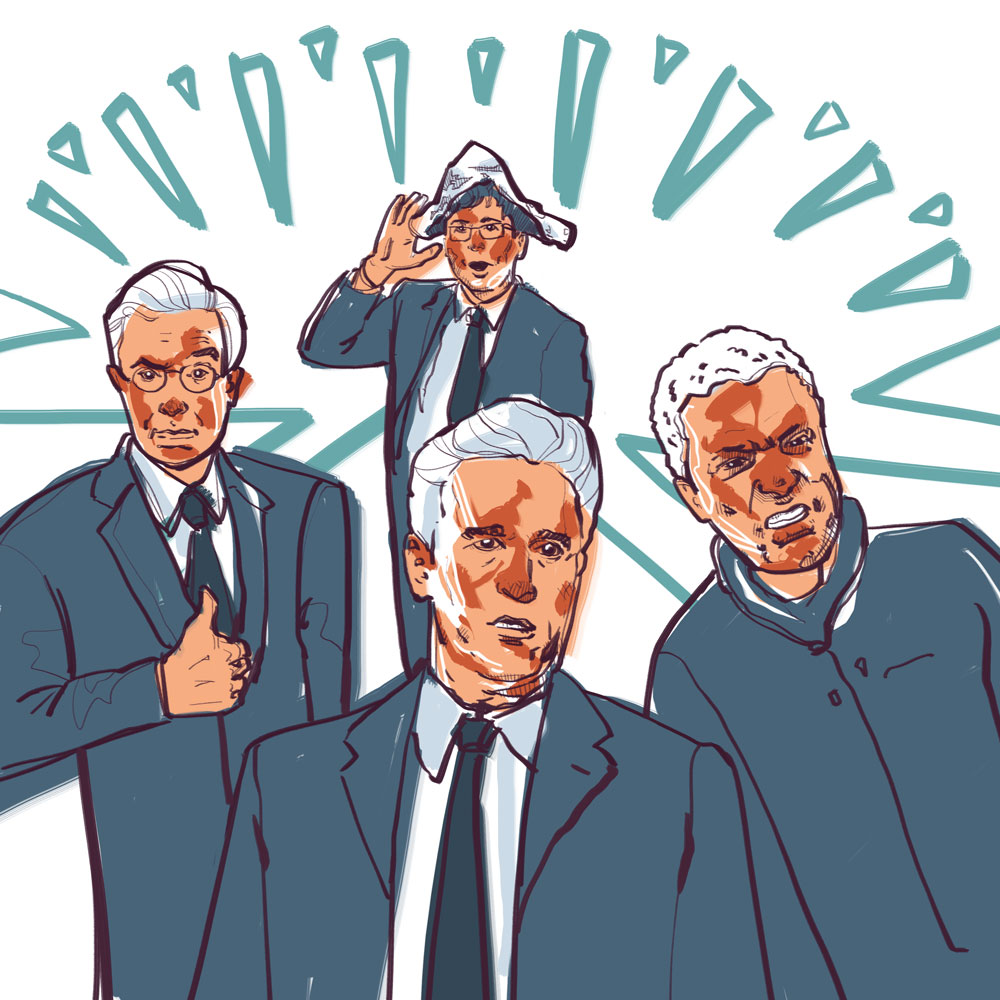The face of journalism is changing. Every day, the field is evolving in its nature as it adapts to societal changes. The notion of a journalist can no longer be neatly defined, as today, more and more people have the power to participate in communication.
No one can understand these changes better than Margo Goodhand, the editor of the Winnipeg Free Press.
After working various jobs — from copy editor to columnist, between the Winnipeg Sun and the Free Press, Goodhand moved up the hierarchy. In 2007, she became the first female editor of the Winnipeg Free Press. Since the start of her career, Goodhand has witnessed major developments in the newspaper industry.
“There has been a huge change in the last 10, and even five years,” Goodhand told the Manitoban. “It’s a much more competitive environment than it used to be.”
Goodhand explained that with the onset of news sources via the Internet, news organizations are constantly competing, as opposed to simply meeting the needs of their respective roles and cycles, be it radio or six o’clock news. What’s more, according to Goodhand, is that each network competes in the same way, by providing video, audio and live casts as sources of information.
“This is all stuff that a newspaper wouldn’t have dreamed of doing 20 years ago, so it’s very exciting — very different and very challenging,” she said.
According to Goodhand, the Free Press experienced their “big eureka moment” during this past year’s civic elections in the fall, when they did a live video of the city hall broadcast on their website. As opposed to watching the traditional nightly news on television, the headquarters housing the other candidates tuned into the Free Press website.
“We watched that and said that’s where we want to be, we want to be it all; [ . . . ] it’s this rich environment that we’re just learning to operate in, and it just shows you how much further you can go as a news organization,” said Goodhand.
While some critics of social media claim that this information overload could negatively affect readers, Goodhand would disagree.
“It certainly changes the way news is shared because it engages the reader more than we are used to,” she said. “The readers are very much part of the stories.”
Goodhand is looking forward to the newest extension of this “collaborative approach” to news — the news café in downtown Winnipeg.
As early as next week, the Winnipeg Free Press will be opening the first news café in Canada, which will act as a social hub where people can come in for a drink and interact with the paper’s journalists directly.
“It’s really going to be cool because it’s almost like a community media lab — people can come in, they can write their own blogs, they can upload their videos to our site, they can talk to journalists,” said Goodhand.
Goodhand said that the significance of the café is to take the paper back to its roots — among the public.
“It’s almost a throwback to the 18th century newspaper which started out of a coffee shop; [ . . . ] it’s so sad that two centuries later we’re this big huge press sitting in a building so far away from the community,” said Goodhand.
She said she hopes the café will help the paper reconnect with the community. The idea was inspired by a news café in Czechoslovakia and came to life thanks to the Free Press’s forward thinking publisher, said Goodhand.
“The whole newsroom wants to move to this café,” said Goodhand with a laugh. “It’s going to be difficult to keep us away from it.”
With the Free Press newsroom consisting of about 100 staff members, space constraints might pose a bit of a problem. Nevertheless, Goodhand said staff members will be moved in and out of the news café.
Goodhand said that one of the biggest challenges she has faced as an editor is getting through the recession and making cutbacks. Certain decisions had to be made — like cancelling Sunday delivery and removing the staples from the TV Guide, a move that alone saved the paper close to $200,000.
“Readers get really mad about that stuff,” she said. “But it saved my journalists; [ . . . ] keeping my newsroom intact and doing good journalism six days a week instead of cutting journalists was more important to me.”
Goodhand said that holding a leadership position in a previously male-dominated field stands as proof that the newsroom has changed.
“The newsroom was always a bit of an army mentality — a ‘my way or the highway’ kind of thing; [ . . . ] there is now more of a collaborative effort in the newsroom, and I think that’s a direct change of having more women,” she said.
“It’s stressful, it’s challenging, but every day is different and every day is creative,” she continued. “I don’t think anyone goes without coffee around here,” she joked.
“But if you thrive on adrenaline and you have a little bit of wanting to change the world in you, it’s a great job,” said Goodhand.
Goodhand feels it is an extremely exciting time to be a journalist. The most important advice she could give is to remind those who think that journalism is dying because of falling subscriptions, to think again.
“The craft has been around for centuries, and it will always be around, but just not in the way that it has been,” she said.


